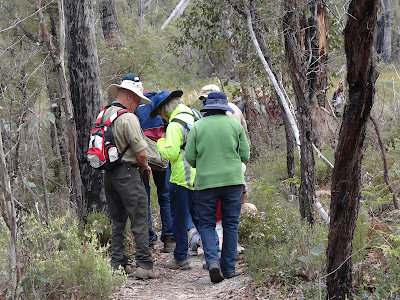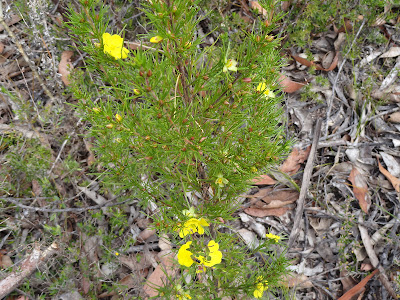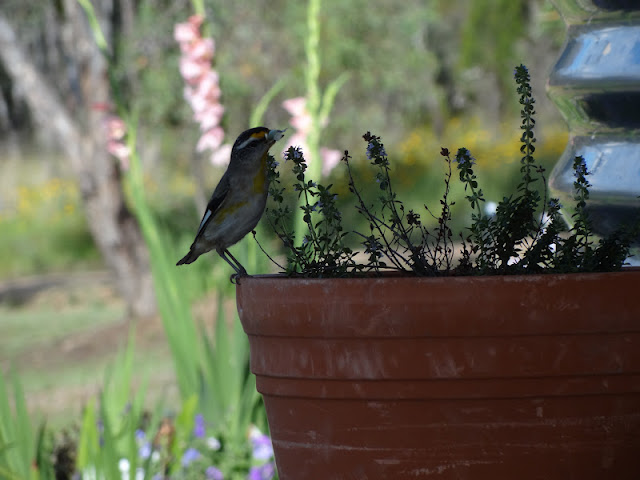Each Spring this group conducts a series of wildflower walks in various parts of the Granite Belt.
Today was my first walk with them, and it was in Girraween National Park, along the Mt. Norman section.
Getting to the starting point for the walk was an unknown for many of us, but the group is well organised, and signs were found at every road junction from Wallangarra into the Mt. Norman track.
And along the way, the last section of which was an unsealed road, there were gates to open, and close!
 |
| No mistaking this. |
Before starting the walk, where to park?
I was almost last to arrive so space along the track was at a premium. Car parking was an exercise in manoeuvring and tight turns.....the track was narrow, and there were lots of vehicles about.
 |
| A bike would have been good idea, from the parking point of view. |
They were an enthusiastic bunch of Nature and Wildflower lovers, all checking plants and checking classification with one another.
And at various sections one of the group leaders would stop, and point out an interesting plant for us to admire....and attempt to classify!
There were a couple of participants who could rattle off nearly every plant's Latin name.
Very impressive stuff.
 |
| We may look a motley crew, but we aren't! |
 |
| We're really quite a pleasant group, all interested in plants. |
 |
| One of the group leaders explaining about a plant for us. |
 |
| ...and another leader explains about another wildflower. |
Like many other National Parks, Girraween is a wild and beautiful place.
Its colours are predominantly grey, due to the huge granite boulders.
 |
| This photo gives you an idea about Girraween...mainly grey, with granite boulders. |
In this section of the park neither the Flannel Flowers, nor the Wattles were out....but the plants had plenty of buds, just ready to burst. It was a pity, because the Flannel Flowers, in bloom are glorious, as are the trees of golden Wattle.
But here are a few of the other plants I saw today. And when I photographed these I was wishing for a you-beaut, technically-up-to-date camera....my shots are not too good, but you will get the general idea (I hope)
 |
| I think that this is a Guinea Flower. (Hibbertia) |
 |
| New England Tea tree (Leptospermum) |
The above photograph does not do justice to the Leptospermum, which was a delicate shade of pale pale pink, merging into white.
 |
| One of the Boronias (F. Myrtaceae) |
 |
| And a blue-flowered something...never found out the name of this, but it was a pretty splash of colour. |
 |
| One of the many heaths in this section of the park (F. Ericaceae) |
 |
| A Banksia.....Family Proteacae |
 |
| Beware...a nest of "itchy grubs" |
Can you see the small caterpillars crawling over the surface of the nest? If they crawl on your skin you do get very itchy, because their surface hairs are brittle, and pierce your skin, which results in the itch and/or a rash......very very unpleasant.
So such a nest should always be admired from a safe distance...as you can see in the next photo.
 |
| A wise viewing distance! |












